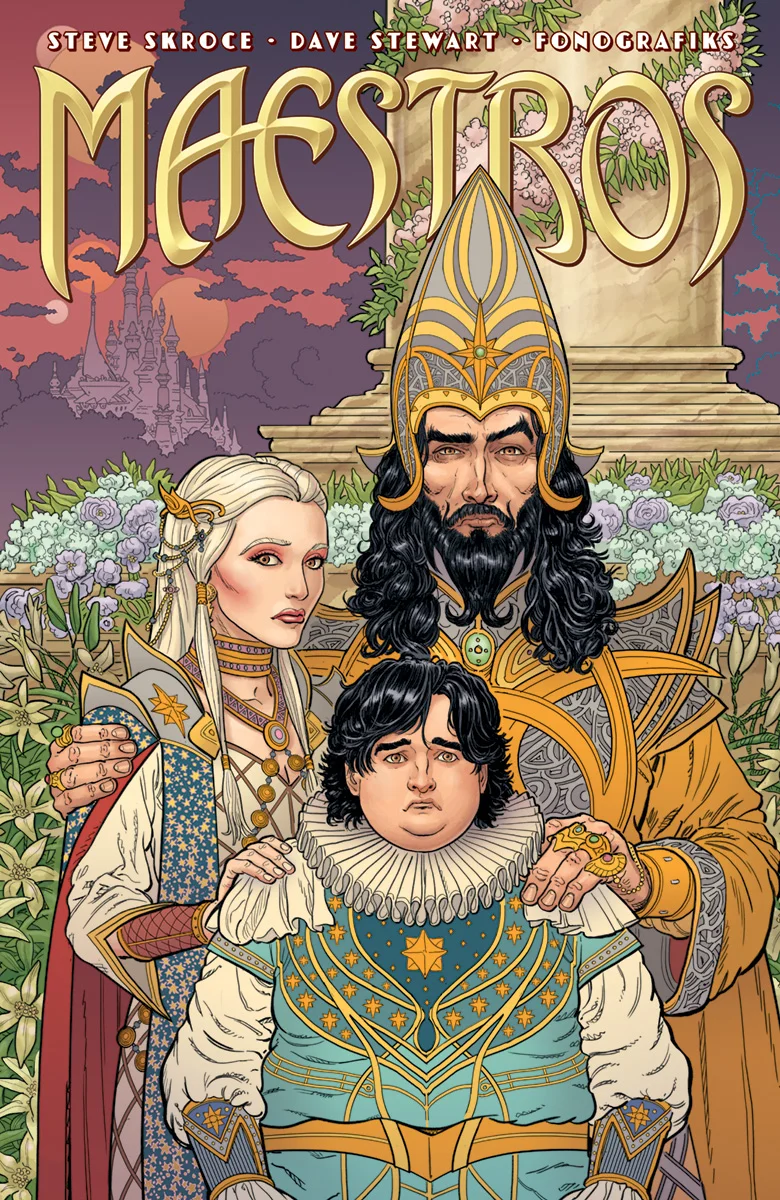Scales and Scoundrels #6 Review
The genre of fantasy is one that has a tendency to rear its head when it comes to the stable of all-ages comic books. There is something about stories of magic, adventure, and age-old sorcery that captivates and intrigues the youthful imagination. Writer Sebastian Girner and artist Galaad have recognized this connection, producing their own all-ages fantasy, Scales and Scoundrels, bringing a classic flair to new readers.
The plot of Scales and Scoundrels is simple, especially to those familiar with popular tabletop role-playing games. Four strangers have found their fates intertwined: a quest-bound prince named Aki; his protector and bodyguard, Koro; mysterious young rogue, Luvander, who may or may not be a dragon; and the meek dwarf, Dorma, who is afraid of the dark. Brought together in search of the same underground city of legend, the group form bonds of companionship while battling thieves, curses, and mystical creatures. That premise will no doubt seems recognizable to many fantasy fans, with some feeling it bordering on cliche. However, a premise is only as worn out as the artists utilizing it, evidenced by the skill Girner and Galaad demonstrate crafting this strong ensemble story for young readers.
Issue #6, for example, is mainly centered around the female dwarf, Dorma. Dorma was hired by Prince Aki as a traveling guide, presuming her to be an expert at the terrains he'd encounter due to her Dwarf heritage. As stated earlier, Dorma has an intense phobia of darkness and is revealed to not be an expert at all; rather, she’s a homebody who wanted to use the Prince’s adventure as a means to find her brother, an explorer that went missing looking for the same city as Aki. Issue #6 is the culmination of Dorma’s arc from the past few issues, connecting the external challenge of discovering her bravery with the internal pains left by her brother's absence. These powerful scenes are great ways to introduce new fantasy fans to the different kinds of conflict that can propel a story.
Other great, pathos-driven scenes include the bodyguard, Koro, going through a very complex crisis of identity following the seeming death of her charge, Prince Aki. Like Dorma, Koro battles a literal external demon in addition to her inner ones of failing her duty and dealing with the emotional fall out that follows. She simultaneously feels a sense of shameful relief that the burden of her Prince is lifted, finally free to live out her own existence. Contrary to those liberated emotions are the feelings of grief for his death, including implied deeper feelings unbecoming her royal position. This is very layered characterization told in an easily digestible package. Girner keeps the story beats and setting simple, introducing fantasy to a new generation of readers, but full of such subtext that keeps them and older readers coming back for more.
These subtle elements of the script are joined by the unique artistic experience Galaad offers. Because Scales and Scoundrels operate with easily understandable storytelling, the accompanying illustrations are at a glance simple but offer more than the cursory glance suggests. Galaad’s images have a painted quality to them, with sketchy lines, and soft palettes in watercolor-esque consistencies. These illustrations invoke the kind of art that would accompany classical fairy tale books mixed with modern sensibilities in the realm of character design. It's a great look for the book that syncs with the script, creates beautifully grandiose scenes, provides visual support to the many emotional moments, and contributes to Scales and Scoundrels ability to foster an accommodating fantasy environment.
A common saying among the comic community is “every comic is someone’s first comic.” Any issue of Scales and Scoundrels would be a fantastic introduction to this medium and genre. Girner and Galaad have done a fantastic job distilling the fundamental basics of a good fantasy epic, while still adding layers of character depth that enrich future readings.
A-









